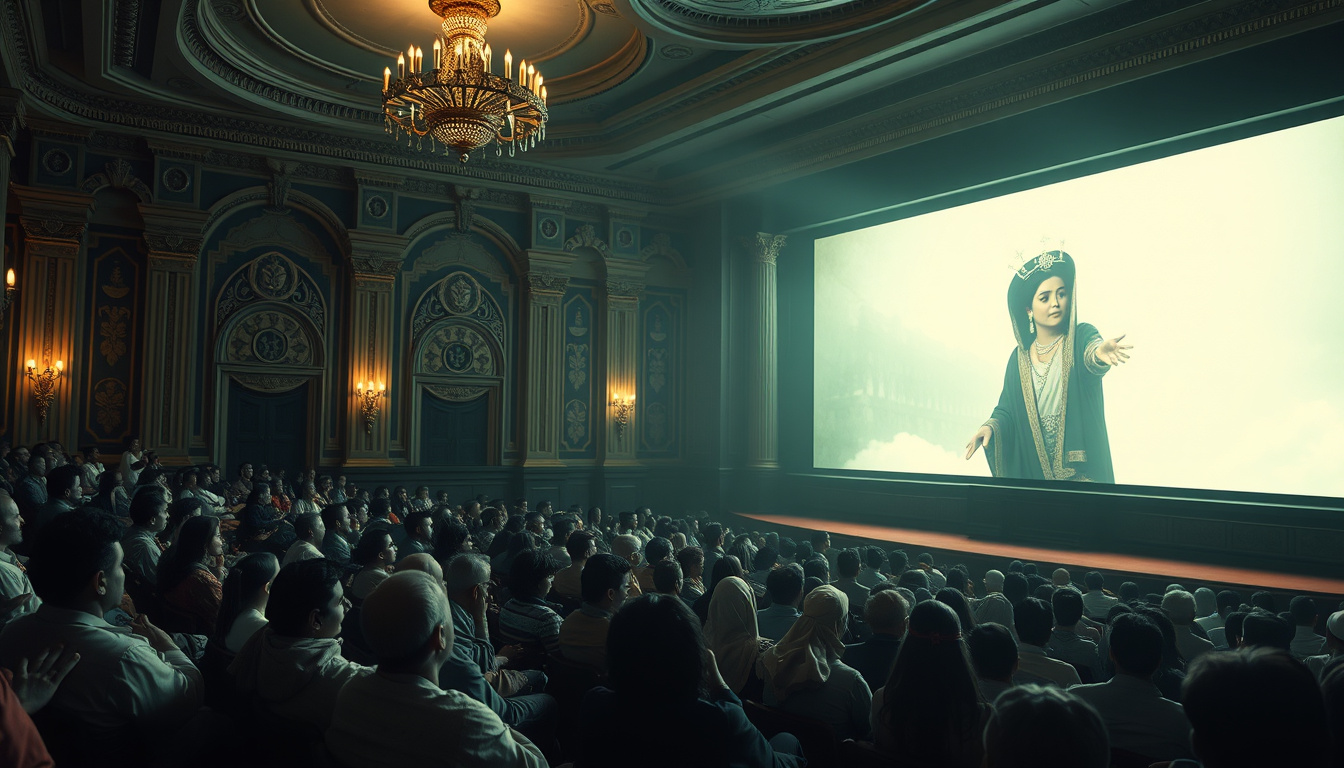In the vibrant world of cinematic history, Egypt stands out for its rich tapestry of storytelling that dates back to the early 20th century.
Among the pivotal cultural shifts during this period were the birth of silent cinema and the emergence of two groundbreaking films: ‘Laila’ (1927) and ‘Zaynab’ (1930).
As the first full-length feature film and a pioneering narrative, respectively, these films not only showcased local talent but also brought to light pressing social issues of the time.
This article delves into the significance of these films in shaping a new era of storytelling in Egypt, reflecting on their themes, technical innovations, and enduring impact on future generations of filmmakers.

Key Takeaways
- Silent cinema in Egypt, exemplified by ‘Laila’ and ‘Zaynab’, played a crucial role in national storytelling.
- Both films tackled pressing social issues, particularly around gender and societal expectations, setting a precedent for future narratives.
- The technical advancements and narrative depth in these early films marked a significant evolution in Egyptian cinema.
The Birth of Egyptian Silent Cinema: ‘Laila’ and Its Impact
The emergence of silent cinema in Egypt during the 1910s and 1920s was a groundbreaking moment in the country’s cultural history, marking the beginning of a national cinematic identity.
Among the notable films of this era, ‘Laila’ (1927) stands out as a cornerstone in the evolution of Egyptian cinema.
Directed by Wedad Orfi and Stephan Rosti, it is recognized as the first full-length Egyptian feature film, showcasing local talent in both roles and production—a critical step towards establishing an indigenous film industry.
The story revolves around Laila, a woman grappling with societal condemnation following an unplanned pregnancy with her lover.
This narrative captures not only the personal struggles faced by women in conservative society but also resonates with broader themes of infidelity and societal judgment.
The film’s cinematography is particularly noteworthy, featuring stunning visuals of iconic locations such as the Giza Pyramids, which beautifully juxtapose urban and rural life, enriching the emotional experience for viewers.
Complementing ‘Laila,’ the film ‘Zaynab’ (1930), directed by Mohammed Karim and based on a novel by Mohamed Hussein Heikal, further elevates the storytelling tradition of Egyptian cinema.
It delves into the life of a young rural woman, Zaynab, caught between her personal desires and the rigid expectations imposed by society, particularly regarding arranged marriage and family obligations.
Spanning about 110 minutes, ‘Zaynab’ showcases significant technical advancements in filmmaking, alongside a narrative that deepens the audience’s understanding of gender roles in early 20th-century Egypt.
Together, ‘Laila’ and ‘Zaynab’ not only progressed the artistic landscape of Egyptian cinema but also sparked crucial conversations around gender and morality, leaving an enduring legacy that continues to inspire future filmmakers in Egypt.
‘Zaynab’: A Shift in Narrative and Technical Innovation
The technical innovations seen in ‘Zaynab’ are particularly noteworthy, as they reflect the evolution of filmmaking practices during a pivotal time in global cinema.
Directed by Mohammed Karim, this film introduced advanced cinematic techniques that enhanced storytelling, such as improved lighting, camera angles, and editing styles.
These innovations made it possible to portray the emotional turmoil of Zaynab more vividly, thus inviting audiences to empathize with her internal conflicts.
The film stands as a testament to the growing expertise within the Egyptian film industry, as many local filmmakers began to experiment with narrative structures and cinematic language that resonated with their cultural context.
By illustrating the struggles faced by its protagonist against a backdrop of societal constraints, ‘Zaynab’ not only entertained but also challenged viewers to reflect on the norms of their time.
The compelling portrayal of gender expectations and the quest for personal freedom marks a crucial step in the narrative evolution that Egyptian cinema would continue to explore in decades to come.

